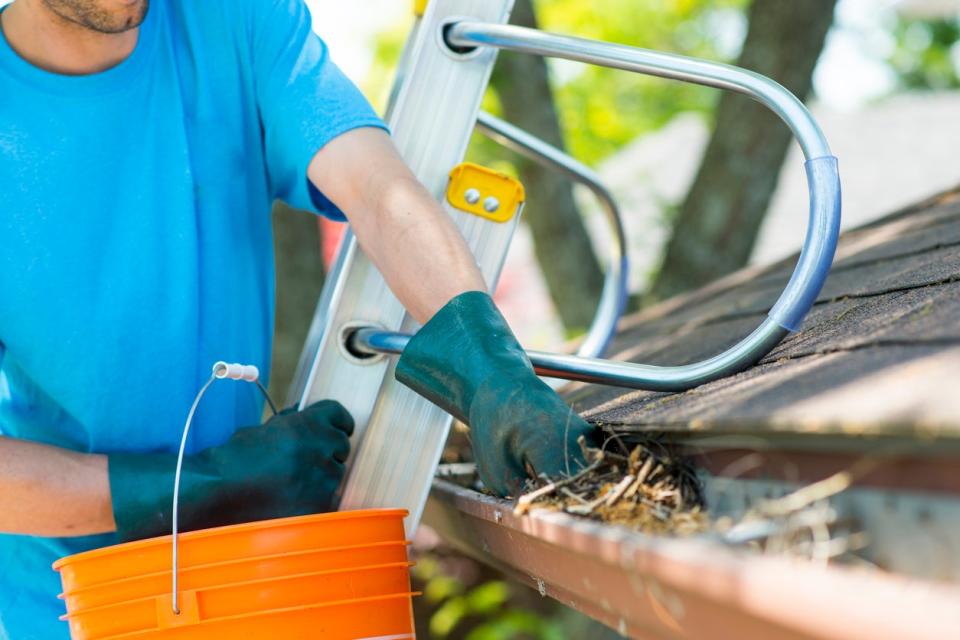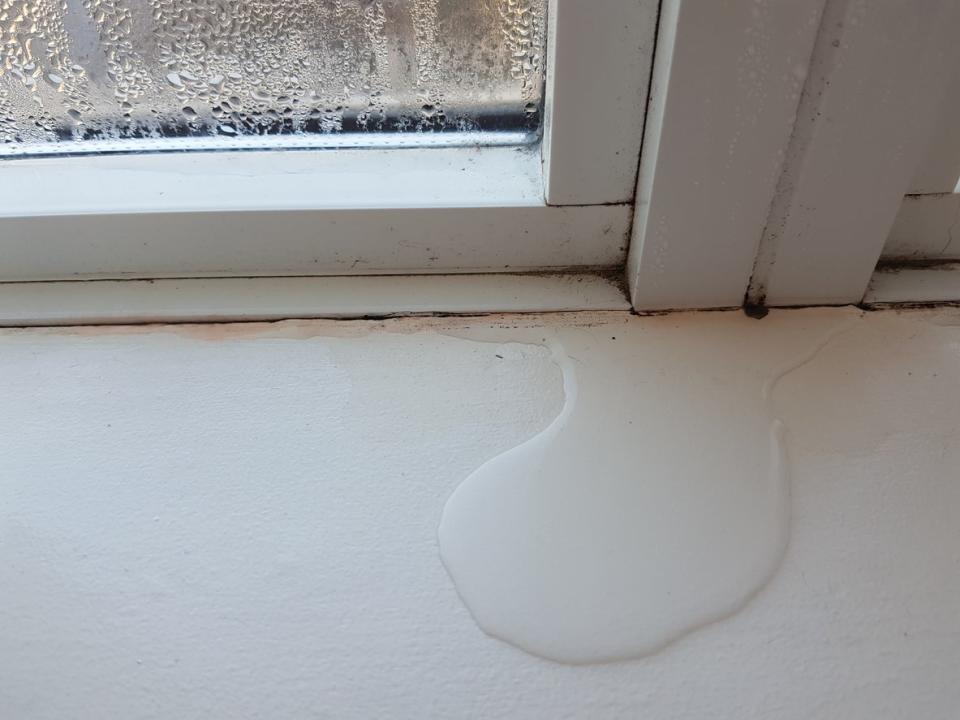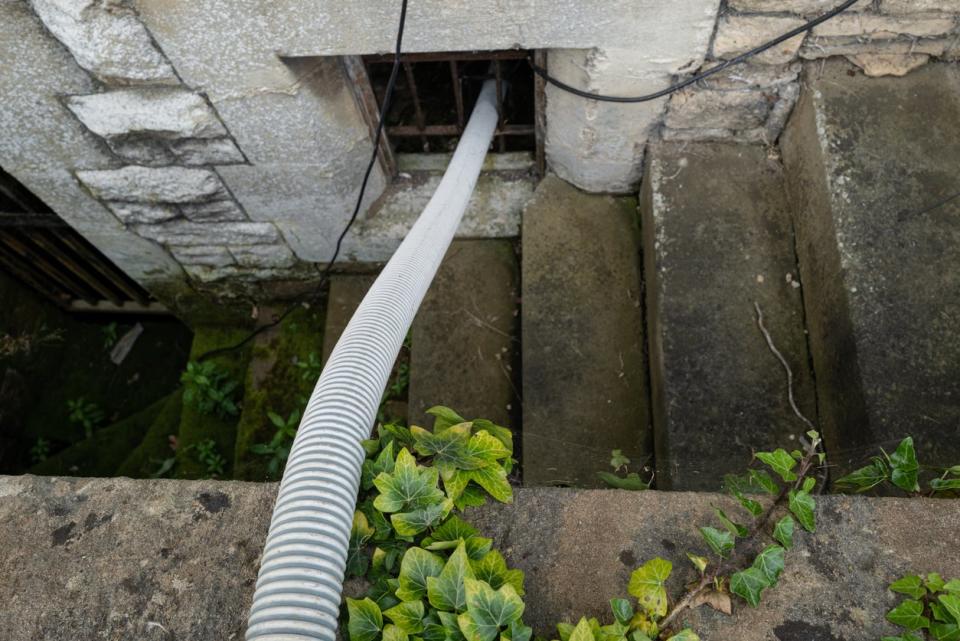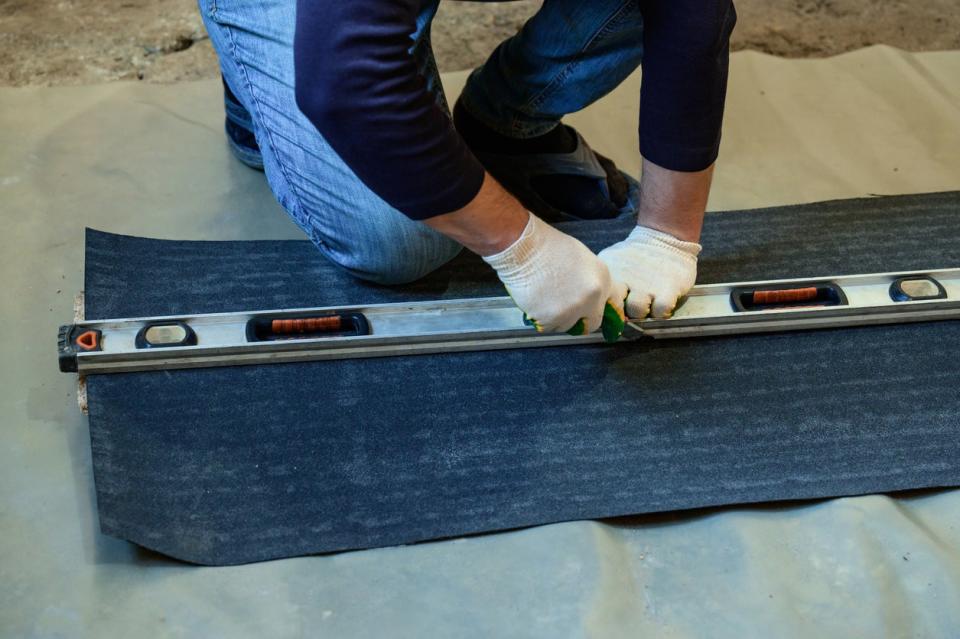Q: Lately I’ve noticed water leaking into my basem*nt after heavy rain. It seems to happen every time a storm rolls in, and I’m not sure what the cause is. What should I do to repair the leaks and prevent them from happening again? Should I call a restoration service?
A: Water in the basem*nt is no small matter—not only can it cause significant structural damage, but it can also lead to dangerous mold and mildew growth. "During periods of heavy rain and severe weather events, your home’s drainage system may struggle to drain excess water," explains Tim Tracy, sales trainer at Groundworks. "To prevent basem*nt flooding during such events, you may need to invest in better basem*nt waterproofing."
After a homeowner discovers that basem*nt leaks are occurring after every rainfall, it’s a good idea to first check for cracks in the interior and exterior walls to see if these are the source of water seeping into the basem*nt. Regrading the lawn, or installing a drain tile system or window well covers, can also help prevent leaks from occurring when storms roll through. A basem*nt waterproofing company can assist with identifying and addressing these issues. If there has already been significant water infiltration, flooded basem*nt cleanup will be essential to preventing water damage and mold growth.
Basem*nt leaks are often the result of improper drainage around the foundation. One solution is to regrade the part of the yard that immediately surrounds the home.
It’s valid to be worried about a wet basem*nt, especially in the case of wet basem*nt walls or water coming up through the basem*nt floor after heavy rain, since these are not normal occurrences. The good news is there are a few ways to resolve this problem, one of which is to regrade the yard. When water is not properly directed away from a home’s foundation, it can accumulate and seep into the basem*nt, leading to leaks, moisture problems, and potential structural damage. Regrading changes the slope of the ground around a home's foundation so that rainwater, snowmelt, and surface runoff flow away from the house. This prevents water from pooling around the foundation and leaking inside the basem*nt.
Homeowners who are handy with landscaping tools may be able to regrade their lawns themselves. However, for the best results, it’s a good idea to pass the job to one of the best foundation repair companies (such as Basem*nt Systems or Ram Jack) or a landscaping specialist. These professionals can assess the current grading around the home, make necessary adjustments, and potentially install features such as French drains, downspout extensions, or swales (channels in the landscape designed for retaining water) to further improve drainage and prevent basem*nt leaks.
Gutter maintenance is also key—if the home’s gutters are clogged or damaged, this can cause rainwater to overflow and seep into the basem*nt.
While it may not be the first thing that comes to mind when a homeowner is looking for a leaky basem*nt fix, cleaning gutters may be an effective solution to this problem. Gutters are designed to collect rainwater from the roof and direct it away from the home, and when they are clean and free of debris, they can efficiently capture and channel rainwater. However, when gutters become too clogged to do their job properly, water will instead overflow and collect around the base of the home. From here, it can begin to leak into the basem*nt.
Photo: istock.com
Depending on how many trees surround the home and how much debris fills the gutters, it’s a good idea to have them cleaned at least twice a year in the spring and fall. One of the best gutter cleaning services (Window Genie and Men in Kilts are two top companies) can not only clean the gutters regularly but also check for and repair any damaged sections of the gutter system and ensure that downspouts are properly connected and extended away from the foundation. It may also be worth installing gutter guards or screens to help prevent debris buildup, which can in turn result in savings on gutter cleaning costs.
If leaking is primarily occurring around window wells, putting in a window well cover can help keep rainwater out.
Water seepage in the basem*nt can come from other places besides leaking basem*nt walls and floors. Window wells are common sites for basem*nt water leaks, as they are a portion of the ground around a basem*nt window that is excavated or dug out to create a depression, or “well,” around the window. They’re built to allow natural light into a basem*nt while also providing a means of escape in case of an emergency. Most window wells have a drain at the bottom so that water does not collect there.
Photo: istock.com
If leaks are occurring near the basem*nt’s window wells, it may be a good idea to install a window well cover to keep any precipitation out. When properly installed, window well covers can direct rainwater away from the window and the basem*nt, reducing the risk of water infiltration and potential basem*nt leaks. They also help prevent debris, leaves, twigs, and other foreign objects from falling into the window well, which could block the well, clog drainage systems, or potentially damage basem*nt windows.
Sealing cracks in the home’s foundation or basem*nt walls can further prevent water infiltration.
If there is water coming into the basem*nt where the walls meet the floor or water seeping through the foundation slab after rain, these issues may be the result of cracks in the basem*nt walls or the home’s foundation. It’s wise to look for visible cracks, both vertical and horizontal, so they can be sealed to prevent more leaks and further damage. Cracks are commonly found in a few key areas:
Interior walls, especially where corners meet and around doors and windows;
Exterior foundation walls;
Basem*nt floor, particularly near drains;
Crawl spaces; and
Where utility lines enter or exit foundation walls.
If there are any exterior cracks, the cost of a foundation crack repair ranges from $250 to $800 depending on the extent of the damage. The bigger the crack, the more crack repair is likely to cost. Costs can also depend on the type of foundation the home has and what material is required to fill in the crack. "DIY solutions for waterproofing, like crack sealant or waterproof paint, are not recommended," says Tracy. "These are not long-term solutions and only attempt to cover up the problem, not solve the root of it."
Interior cracks are more DIY-friendly to repair, but they may be indicative of a larger foundation problem. To repair basem*nt wall leaks, homeowners can use a putty knife or drywall knife to apply filler compound over the crack, let it dry, sand over it to smooth it, and paint it to blend in with the wall. However, this is likely only a temporary fix; homeowners will want to contact a professional to properly deal with basem*nt leak repairs.
Drain tile systems can collect any excess rainwater that makes its way into the basem*nt.
Also known as a French drain, a drain tile system is a drainage solution used to redirect groundwater or excess surface water away from a home. These systems are commonly used to prevent water from accumulating around foundations, basem*nts, and crawl spaces. If all the proper precautions have been taken but there is still water leakage in the basem*nt, it may be worth it to have a drain tile system installed.
Photo: istock.com
A drain tile system consists of a network of perforated pipes, usually made of PVC or corrugated plastic, that are installed underground around the perimeter of a home’s foundation or in areas where water tends to collect. These pipes are typically placed in a bed of gravel or crushed stone and collect groundwater that would otherwise pool around the foundation and cause leaks. Drain tile systems can be interior or exterior, and they require little maintenance aside from inspecting the system to make sure no debris builds up.
It’s also a good idea to install a sump pump along with the drain tile system to pump the water out of the basem*nt and away from the home.
A sump pump is often used in tandem with a drain tile system to provide effective basem*nt water management. Together, they help prevent water accumulation and protect a home from moisture-related issues. Often, a sump pit is installed at the lowest point of the drainage system or in the basem*nt or crawl space. This pit acts as a collection point for the water that has been transported by the drain tile system. Inside the sump pit is a sump pump, which is responsible for pumping the collected water out of the pit and away from the home. It's typically equipped with a float switch that activates the pump when the water level in the pit reaches a certain height.
Together, a drain tile system and sump pump can prevent a leaky basem*nt and protect the home’s foundation to keep moisture issues at bay. It’s important to periodically inspect the sump pump to ensure it’s functioning correctly, especially during heavy rainfall or wet seasons.
In most cases, it’s best to have a basem*nt waterproofing company identify and address the cause of basem*nt water leaks.
When a homeowner is dealing with basem*nt leaks, it’s best to call one of the best basem*nt waterproofing companies such as B-Dry to identify where the leaks are coming from and put measures in place to prevent them from coming back. The best waterproofing method will depend on where the infiltration is coming from. For example, if foundation cracks are the root of the problem, filling these cracks and applying a sealant may be the best approach. If drainage issues in the yard are the primary problem, it may be more effective to put in an exterior French drain. Basem*nt waterproofing professionals can determine the most appropriate solution for an individual home.
Photo: istock.com
Basem*nt waterproofing costs can also vary depending on the waterproofing method that is used. Basem*nt excavation, for example, could cost around $120 to $220 per linear foot, while installing drain tiles (also called weeping tiles) can run $1,000 to $10,000. Waterproofing a basem*nt can also include installing gutters and downspouts, applying sealants to cracks, installing liquid or sheet membranes, and other measures.
A water damage restoration service can restore flooded basem*nts to prevent mold growth and structural damage from occurring.
Timely water damage restoration is critical in preventing mold growth and structural damage in homes that have been affected by water damage. According to the Environmental Protection Agency (EPA), it can take as little as 24 to 48 hours for mold to start growing after water infiltration has occurred. Further, mold growth in a home can cause adverse health effects in those who are exposed to mold allergens, especially in people who have weakened immune systems or respiratory problems. If there is already significant water accumulation, the fastest way to dry out a wet basem*nt is to mop up or drain the water, then open up windows or use a dehumidifier to air out the area. Still, it’s generally best to also call in a professional to ensure that no additional damage occurs. Homeowners can contact one of the best water damage restoration services (consider ServiceMaster Restore or ServPro) near them to dry out the moisture and repair any damaged flooring, drywall, insulation, or other areas of the home affected by water.
Sources: Angi



